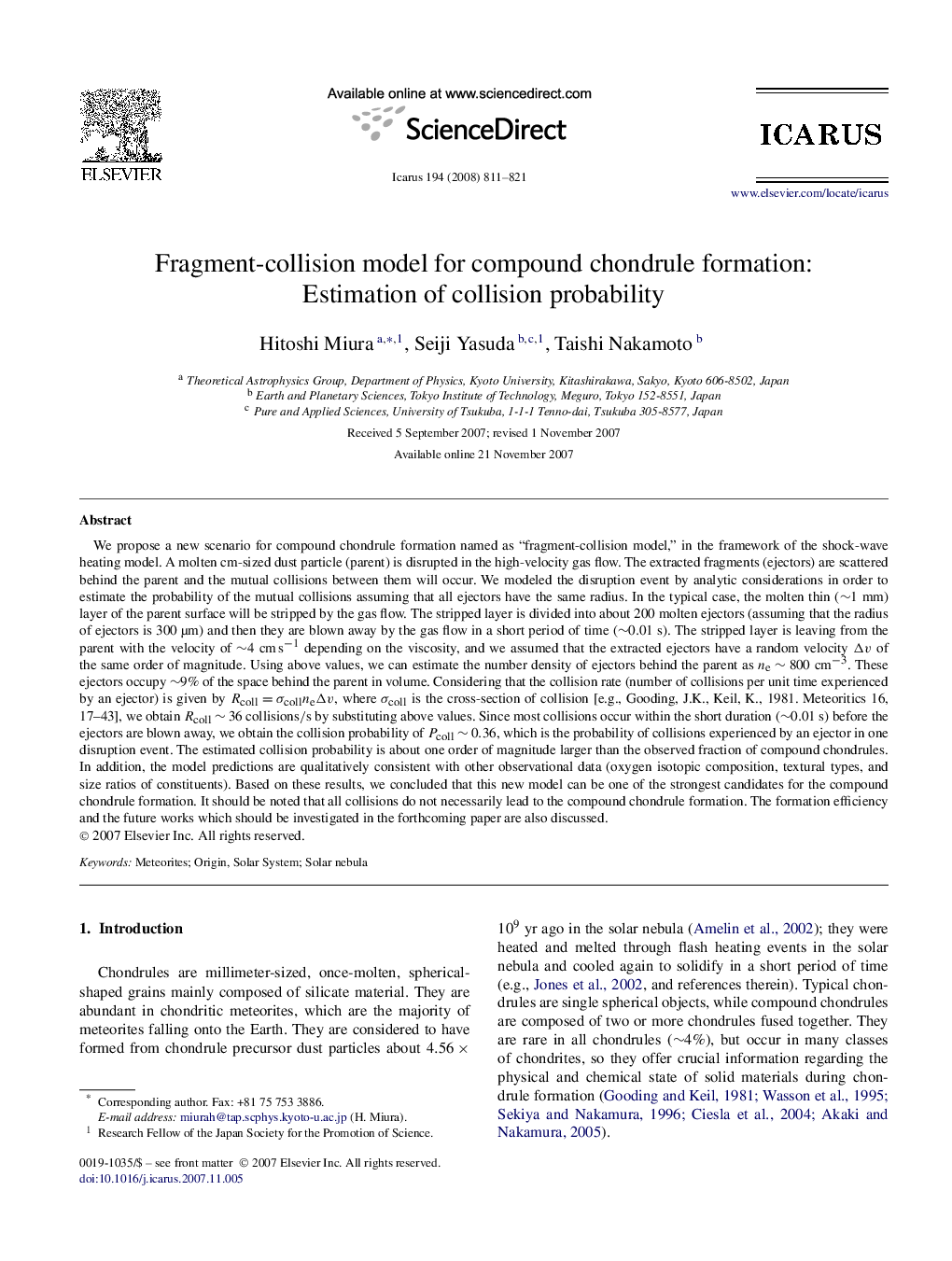| کد مقاله | کد نشریه | سال انتشار | مقاله انگلیسی | نسخه تمام متن |
|---|---|---|---|---|
| 1775185 | 1021186 | 2008 | 11 صفحه PDF | دانلود رایگان |

We propose a new scenario for compound chondrule formation named as “fragment-collision model,” in the framework of the shock-wave heating model. A molten cm-sized dust particle (parent) is disrupted in the high-velocity gas flow. The extracted fragments (ejectors) are scattered behind the parent and the mutual collisions between them will occur. We modeled the disruption event by analytic considerations in order to estimate the probability of the mutual collisions assuming that all ejectors have the same radius. In the typical case, the molten thin (∼1mm) layer of the parent surface will be stripped by the gas flow. The stripped layer is divided into about 200 molten ejectors (assuming that the radius of ejectors is 300 μm) and then they are blown away by the gas flow in a short period of time (∼0.01s). The stripped layer is leaving from the parent with the velocity of ∼4cms−1 depending on the viscosity, and we assumed that the extracted ejectors have a random velocity Δv of the same order of magnitude. Using above values, we can estimate the number density of ejectors behind the parent as ne∼800cm−3. These ejectors occupy ∼9% of the space behind the parent in volume. Considering that the collision rate (number of collisions per unit time experienced by an ejector) is given by Rcoll=σcollneΔvRcoll=σcollneΔv, where σcollσcoll is the cross-section of collision [e.g., Gooding, J.K., Keil, K., 1981. Meteoritics 16, 17–43], we obtain Rcoll∼36collisions/s by substituting above values. Since most collisions occur within the short duration (∼0.01s) before the ejectors are blown away, we obtain the collision probability of Pcoll∼0.36Pcoll∼0.36, which is the probability of collisions experienced by an ejector in one disruption event. The estimated collision probability is about one order of magnitude larger than the observed fraction of compound chondrules. In addition, the model predictions are qualitatively consistent with other observational data (oxygen isotopic composition, textural types, and size ratios of constituents). Based on these results, we concluded that this new model can be one of the strongest candidates for the compound chondrule formation. It should be noted that all collisions do not necessarily lead to the compound chondrule formation. The formation efficiency and the future works which should be investigated in the forthcoming paper are also discussed.
Journal: Icarus - Volume 194, Issue 2, April 2008, Pages 811–821